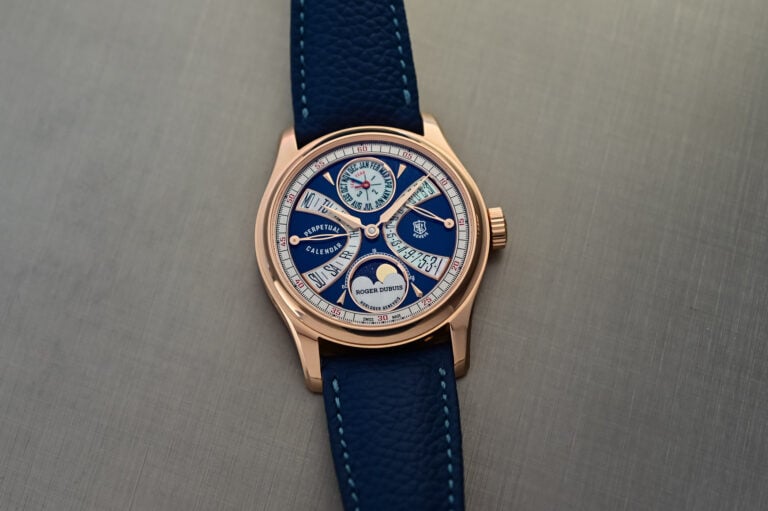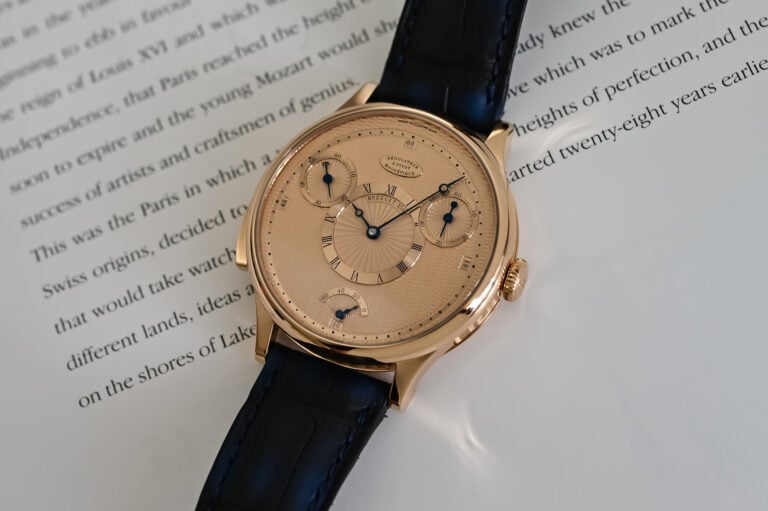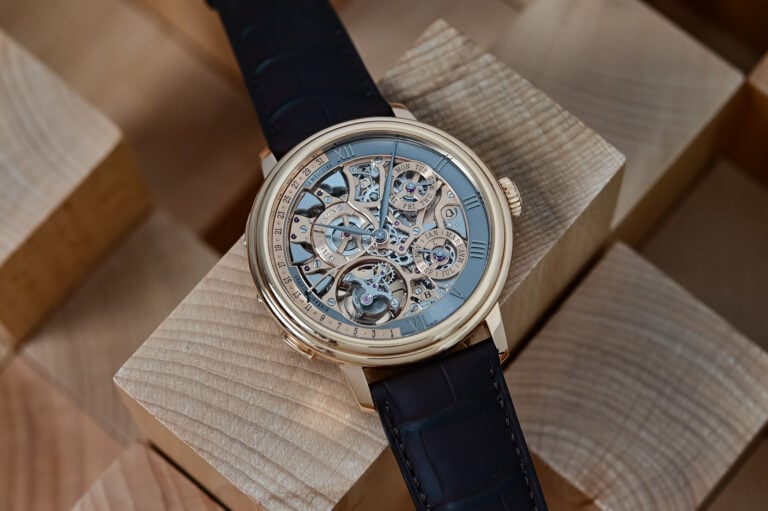A gemstone that has been shaped and polished, but not faceted. These are used in mechanical movements to reduce friction and wear at critical joints.
The mechanical or quartz movement of a watch.
An advanced watch complication similar to the tourbillon, used to counter the forces of gravity as a cage containing the balance and escapement rotate 360 degrees (to improve accuracy). Unlike a tourbillion that uses one power train for everything, a carrousel uses two power trains – one to rotate the cage and a second to power the escapement.
The physical container housing all parts of the watch, including the movement, dial, crystal and crown. Wristwatch cases generally have two lugs on either end to attach to a strap or bracelet.
The bottom lid that closes the back of the case and seals in the movement and dial. A caseback usually screws into the case or is attached via screws, and can either be solid or feature a transparent exhibition window to display the movement.
A solid, non-metallic and non-organic material used as a replacement of metal in watch cases, bezels, bracelets and sometimes movement components like ball bearings. Ceramic is anti-magnetic, very resilient and resistant to scratches and fading. It’s also hypoallergenic for those with a sensitivity to metals.
A type of enameling where hollows are carved into metal and then filled with vitreous enamel, a type of enameling that uses powdered glass baked in a kiln, melting the powder to a glass-like finish.
A ring usually mounted on the outer edge of the dial. A chapter ring can be decorated with tracks or indices for timing indications.
An analog watch containing a stopwatch function. A dedicated seconds hand can be started, stopped and reset via pushers on the case, with varying amounts of separate sub-dials to measure additional minutes and hours. Complex chronographs can time multiple events simultaneously.
A mechanical watch that’s certified to the strictest degree of accuracy. In Switzerland, the Contrôle Officiel Suisse des Chronomètres (COSC) certifies watches as chronometers, while equivalent bodies in other countries follow international standards. A general rule is that chronometers have a maximum deviation of -4 to +6 seconds per day.
A guilloché (or embossed) pattern on a watch dial that forms a series of small pyramid-like squares. Also known as a hobnail pattern.
(horizontal vs. vertical) – Used for the coupling of the chronograph and timekeeping gear trains. A horizontal clutch features a gear that pivots to engage the chronograph centre wheel. A vertical clutch couples to the chronograph gear train via friction instead of a gear, similar to the clutch system on a car. This provides a smoother start of the chronograph seconds hand.
A type of escapement most commonly associated with George Daniels and adopted by Omega. It uses three pallets instead of the traditional two to separate the locking function from the impulse. It also replaces sliding friction with a lighter radial friction, removing the need to lubricate the pallets. This increases accuracy and decreases the frequency of maintenance intervals.
A rotating wheel, usually in a chronograph, that’s upright and notched (resembling a castle’s turret) that replaces a cam for a more precise and smooth mechanical action. A column wheel is one piece as opposed to a multi-piece cam, rotating one step with the click of a pusher as a mechanical piece drops between the teeth to activate the function.
An analog watch function that’s additional to the hours, minutes and seconds. Examples include a date, power reserve indicator or moon phase.
Contrôle Officiel Suisse des Chronomètres, the official Swiss entity that certifies mechanical watches as chronometers (accurate to -4 to +6 seconds per day). Tests last for several days under multiple conditions including temperature and position. Quartz watches can also be certified (+/-0.07 seconds per day).
One of the best known watch movement decorations, consisting of an intricate series of wave-like scratches forming parallel lines on plates, bridges and rotors. Also known as Geneva stripes or Geneva waves. Watchmakers from the German region of Glashütte have developed a similar finish technique called Glashütte Ribbing.
A knob on the side of a watch case, usually at 3 o’clock, but there’s no general rule for placement. The crown is used to set the time, date and other complications, and can also wind the movement. Some watches have multiple crowns to handle a variety of tasks, such as one to set the time and another to rotate an internal bezel.
The transparent cover protecting the dial, usually made from sapphire, hardened glass or acrylic.



